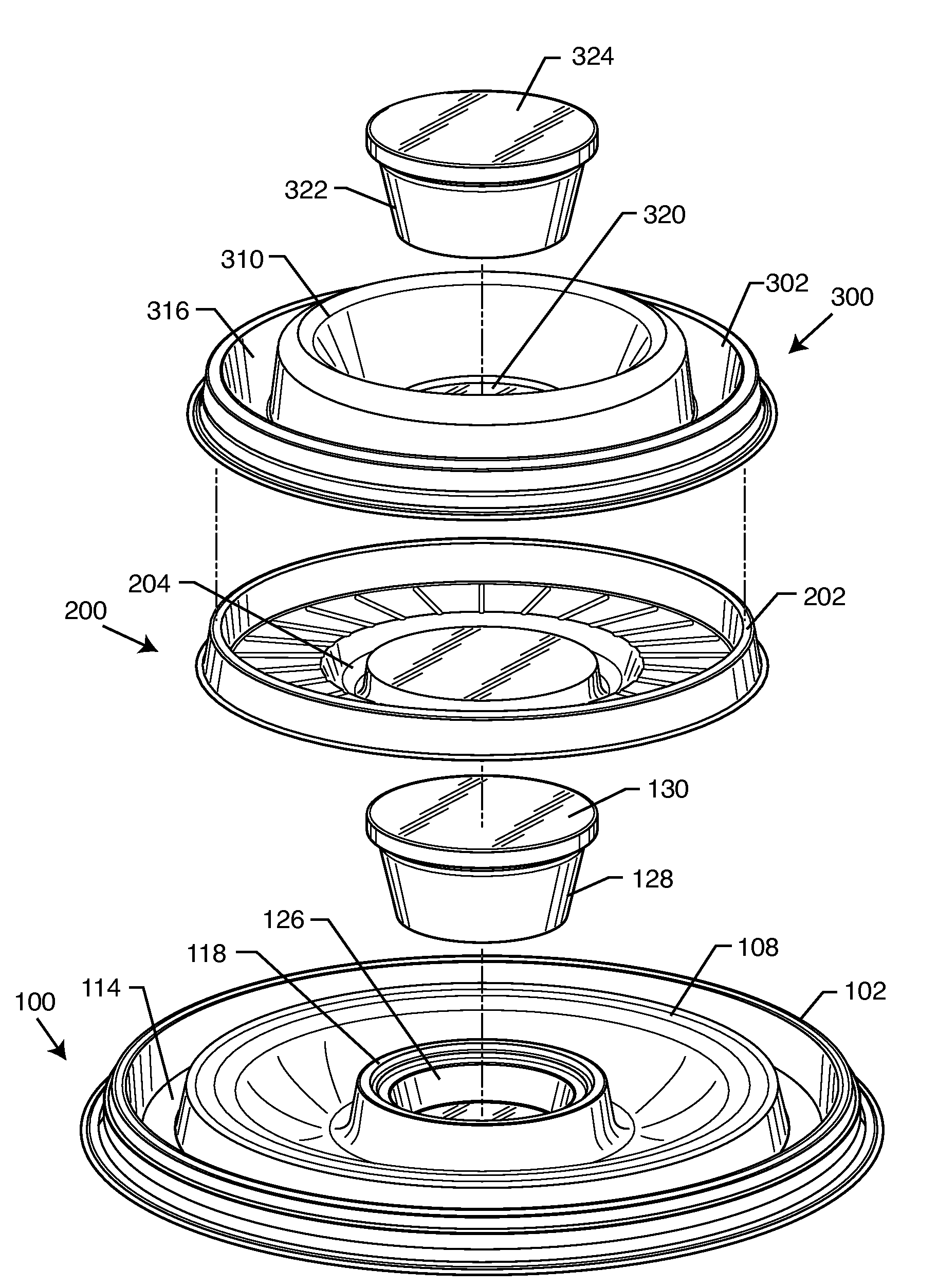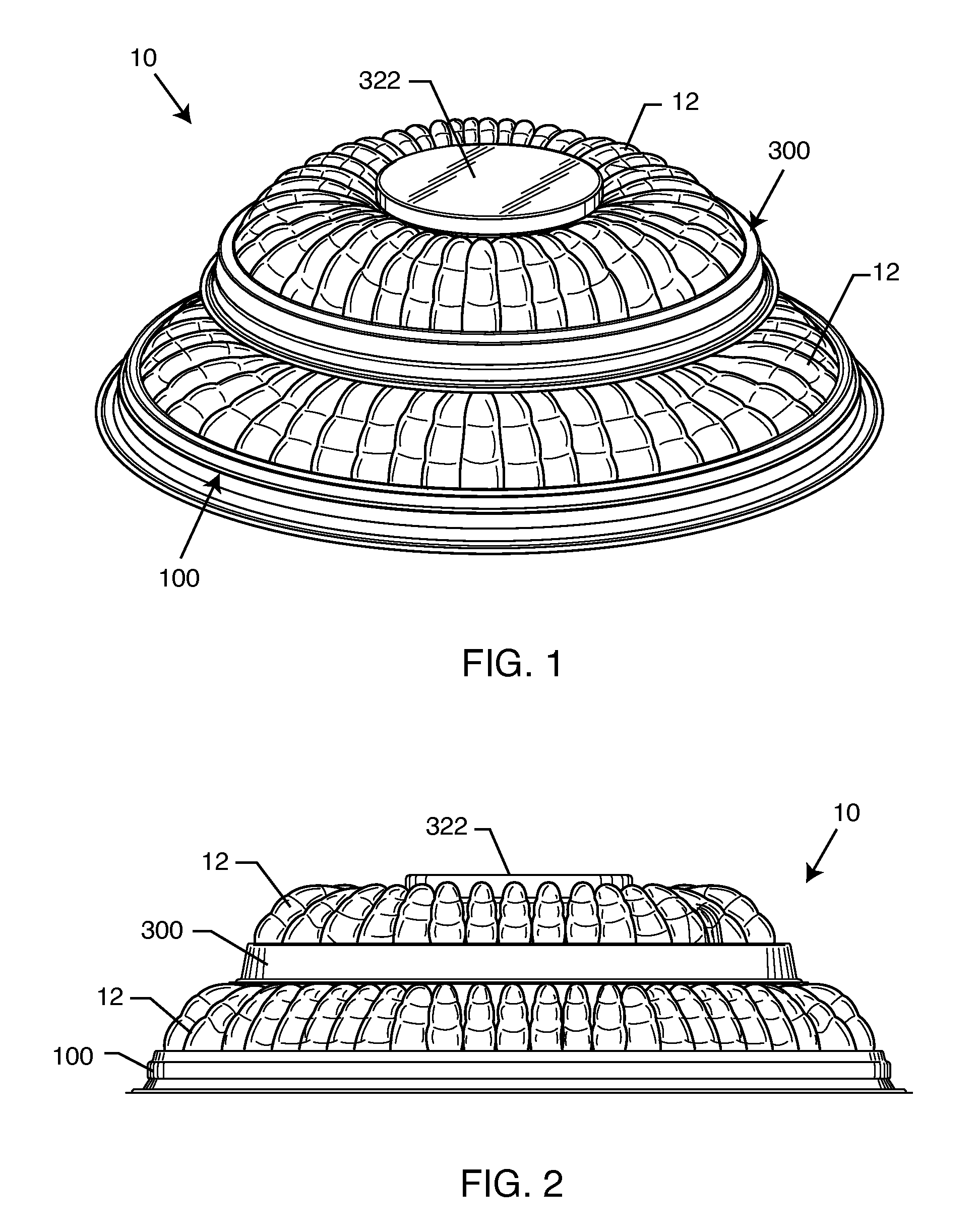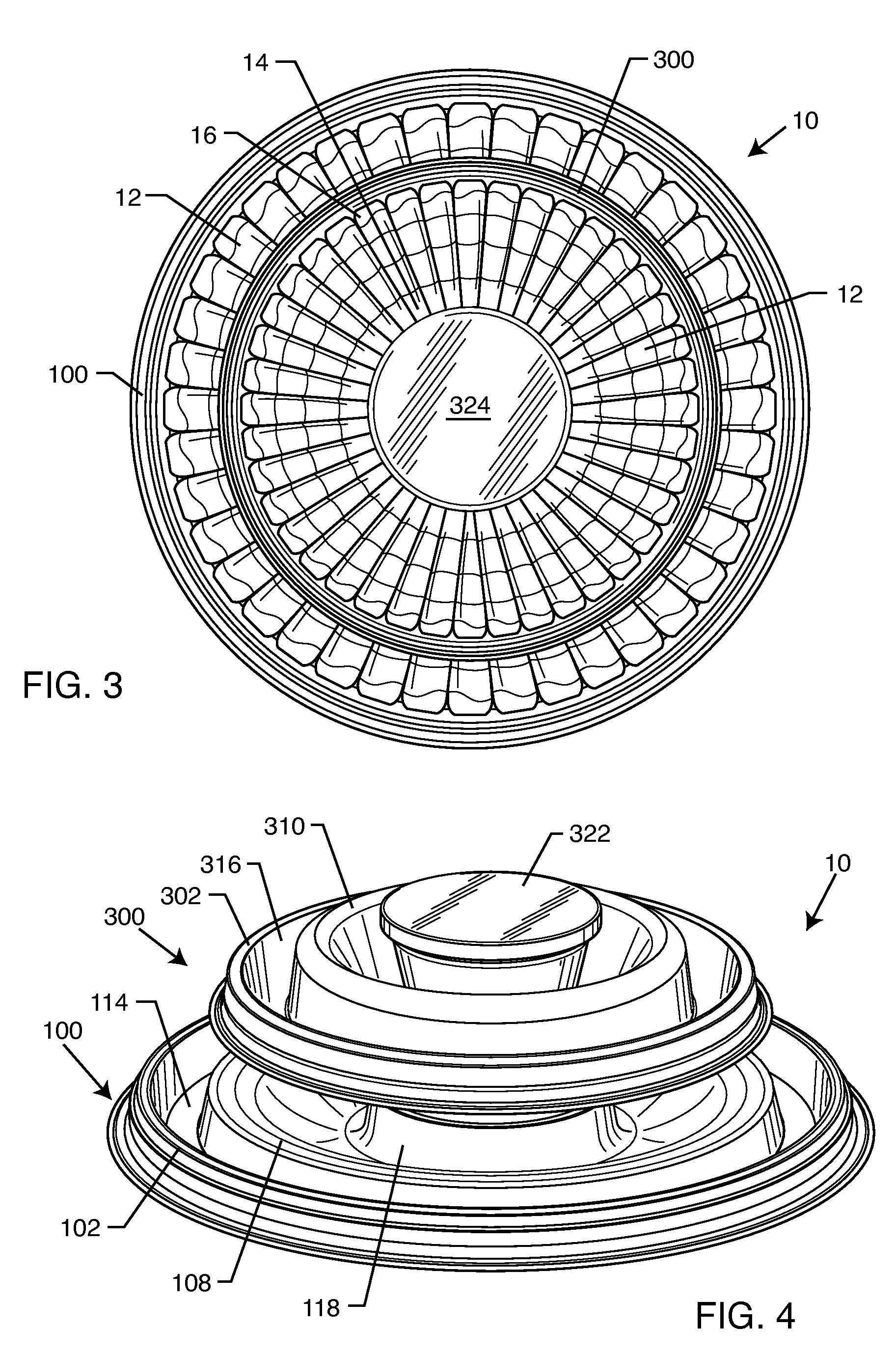Double-stack shrimp tray
- Summary
- Abstract
- Description
- Claims
- Application Information
AI Technical Summary
Benefits of technology
Problems solved by technology
Method used
Image
Examples
Embodiment Construction
[0024]As shown in the accompanying drawings, for purposes of illustration, the present invention resides in a tiered shrimp tray, generally referred to by the reference number 10. The double-stack shrimp tray 10 of the present invention is particularly adapted for packaging, shipping, storing and serving frozen shrimp. As will be more fully described herein, the shrimp tray 10 of the present invention presents an aesthetically appealing presentation of frozen shrimp, and enables the end user to purchase two shrimp trays in a single package for placement at different locations to serve party guests.
[0025]With reference now to FIGS. 1-3, the double-stack, tiered shrimp tray 10 in its final assembled form is shown. A base tray 100 supports a plurality of shrimp 12 formed in a ring-like structure. An upper tray 300, which is of reduced diameter with respect to the lower tray 100 also supports a plurality of shrimp 12 which are arranged side-by-side to form a ring structure on the upper ...
PUM
| Property | Measurement | Unit |
|---|---|---|
| Diameter | aaaaa | aaaaa |
Abstract
Description
Claims
Application Information
 Login to View More
Login to View More - R&D
- Intellectual Property
- Life Sciences
- Materials
- Tech Scout
- Unparalleled Data Quality
- Higher Quality Content
- 60% Fewer Hallucinations
Browse by: Latest US Patents, China's latest patents, Technical Efficacy Thesaurus, Application Domain, Technology Topic, Popular Technical Reports.
© 2025 PatSnap. All rights reserved.Legal|Privacy policy|Modern Slavery Act Transparency Statement|Sitemap|About US| Contact US: help@patsnap.com



